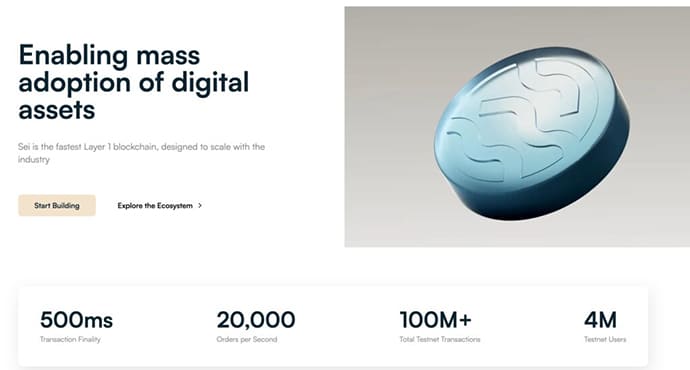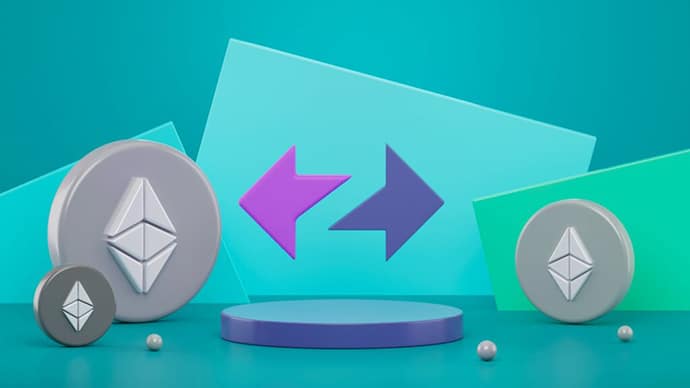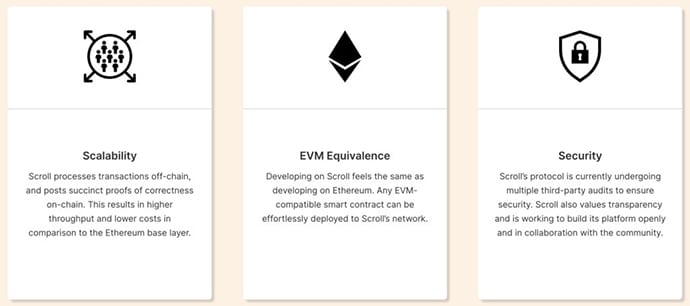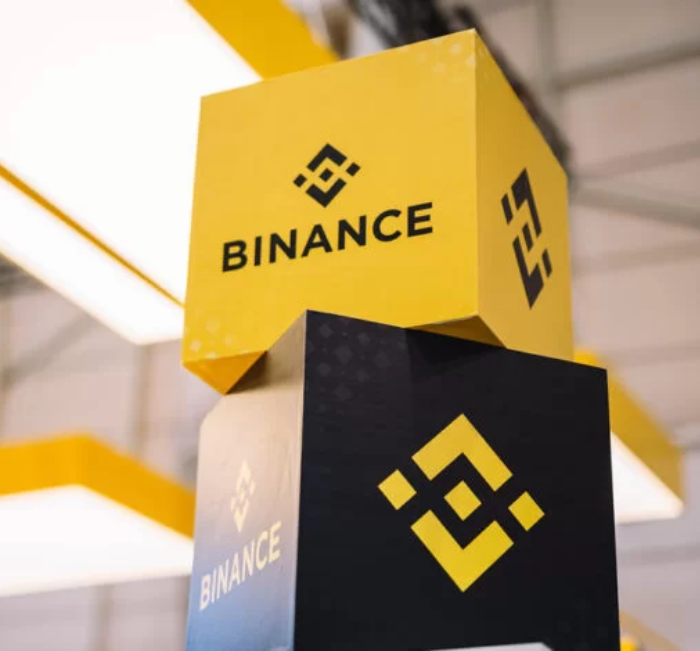New here?
Read up on our past Crypto issues to get the most from this post.
A special thanks this issue to our friends at Coinjar, who wrote the briefing below. I’ve edited it down slightly, but all the genius is theirs.
If you’re not familiar, CoinJar is one of the longest-running cryptocurrency exchanges in the world. Since 2013, they’ve helped more than 600,000 people worldwide buy, sell and spend billions of dollars in Bitcoin, Ethereum and many other cryptocurrencies.
TLDR:
- I’m mining in public!
- L1s to watch this crypto summer
- Which L2s are poised to blow up?
Let’s go!
I’ve always been a bit unclear how Bitcoin mining works.
Learn by doing, right?
So I’ve teamed up with the good people at Sazmining to mine in public (MIP).
They’ve allocated Alts one of their state of the art WhatsMiner M30S++ | 108 TH/s Bitcoin mining rigs to set loose in the offshore hydro-powered mining facility they’re launching in Paraguay this September.
Any money we make (fiat or otherwise) is ours to keep, so I’m going to be pushing that thing to the limit.
Why Sazmining?
First, I’m an idiot, and Sazmining makes Bitcoin mining super easy. I’m going to be all over my rig like white on rice, but if you want to just throw money at Sazmining and collect your cash, that’s their wheelhouse.
There’s a handy dashboard where I can see my profits (🤞) and manage my rig.
Second, it’s powered by hydroelectricity, so I don’t have to worry about all those other idiots telling me how my rig (we’ll call her Olive) is ruining the planet.

Support Sazmining
If you like the sound of the above, there are two ways to support — and profit from — Sazmining.
First, they’re doing a crowdfund equity raise. It ends June 30th, though, so you’ve gotta be quick.
Second, you can buy one of their rigs for around $2k.
Table of Contents
Crypto summer is coming.
While we’re experiencing yet another bear market in crypto, builders continue building and launching new projects. The ones that succeed in the bear might even be more ready for any upcycles.
Today we’ll discuss a few L1s and L2s worth watching this year.
Layer-1s describe independent blockchains that control their own consensus mechanism and primary architecture. Examples of Layer-1 blockchains include Ethereum and Bitcoin.
Layer-2s, by contrast, are built on top of Layer-1s, often to aid scaling purposes, and don’t necessarily function as a standalone chain.
Let’s dive in
Layer-1s worth keeping an eye on.
Radix
Chances are you can probably recall at least one major DeFi hack in recent weeks. Radix addresses one of the biggest challenges in crypto: the difficulty of building secure code. The full-stack layer-1 is easy for developers to build on and introduced its own programming language (scrypto) as well as a virtual machine (radix engine) to remove hacks and empower the creation of production-ready dApps.
Its unique consensus mechanism processes transactions in parallel, dividing the network into shards that offer practically unlimited capacity for users and dApps to simultaneously use the network without experiencing fee increases or congestion.
While the Radix mainnet went live in October 2021, the token still isn’t available on major centralized exchanges, which in itself offers a potential opportunity. Nevertheless, the Radix team just recently raised $10 million in fresh funding to push its upcoming Babylon upgrade that will introduce smart contract functionalities, as well as developer royalties. Developer royalties are an on-chain system to reward contributors for their work on Radix and have been well-received by developers.
Speaking of which, despite a lack of hype around the project, developer activity on Radix has been on an uptrend and isn’t expected to fade.
The Cosmos Ecosystem
As more and more people start using blockchain technology, developers face big challenges like making it faster (scalability), helping different blockchains work together (interoperability), and ensuring it’s not controlled by just one entity (decentralization).
Cosmos is like a universe where each project can have its own blockchain, using a system called Proof-of-Stake (PoS), instead of all projects being on one big blockchain.
A special feature in Cosmos is the Inter-Blockchain Communication (IBC) protocol made by the Tendermint team. This is like a messaging system that lets different blockchains in Cosmos work together safely while still being independent.
Because Cosmos lets projects have their own customizable blockchains and work together easily, it’s become very popular with lots of projects, investors, and developers.
SEI

SEI is an appchain in the cosmos ecosystem, which means it’s a custom blockchain that was built using the Cosmos SDK, therefore benefitting from communications with other IBC chains. The team is building the fastest Cosmos chain with a focus on enabling trading and DeFi and becoming the go-to backbone for DEXs in DeFi, NFTs, and gaming.
SEI’s finality is rivaling that of CEXs while surpassing DEXs settling blocks in just 500 ms. One way the founders describe SEI is as a “super highway for trading activity.” Further features of SEi include an on-chain order matching module dApps can tap into for synchronous composability (using other chains modules without time lack), and frequent batch auctions, which prevent front-running and sandwich attacks.
SEI has seen over 4 million users sign up for its testnet, settling over 100 million transactions. It’s fully open-sourced and boasts a $120 million ecosystem fund to boost network growth.
Tenet

Liquid Staking is all the rage in DeFi. The ability to stake your token without losing the ability to sell turned out to be an attractive proposition for the average DeFi investor. Tenet, an upcoming Layer-1 also on Cosmos, will secure its chain through liquid staking coins from other networks. This means anyone who has stETH or other assets can provide security to Tenet. Additionally, Tenet brings EVM to Cosmos, and features an in-house DEX and lending market where users can mint a stablecoin backed by liquid staking derivatives.
The native wallet of Tenet is called Eva and will soon launch an AI assistant to aid users in making their trades. You can already use it for seamless onboarding and playing games.
'Eva' is now officially LIVE & public for access on the Apple Play Store.
— Tenet Protocol (@tenet_org) June 5, 2023
Today, Eva will get into the hands of millions of retail users that can now have their first seamless onboarding experience into a crypto wallet.
✦ No key management
✦ No crypto knowledge needed… pic.twitter.com/DZT51fl90F
The network is built by former executives from Ankr and Blockdaemon and advised by members of the leading Liquid Staking protocol Lido, as well as members of ankr and Open AI.
Currently, in testnet, the mainnet launch is scheduled for Q3 2023. Tenet will run a public sale with DAO maker later this year.
Coreum
The third Cosmos chain worth watching this year is called Coreum and is targeting the enterprise market. The chain is introducing an Enterprise-Graded Blockchain standard offering compliance while adopting general standards for financial information, such as ISO 20022.
30 validators are securing the chain, and its block time of 1.81 seconds powers real-time settlements. Instead of sharing all transaction details in public, Coreum enables companies to settle their trades without revealing any confidential information.
A major innovation of Coreum is its concept of smart tokens, where tokens are wrapped around smart contracts, making them customizable, lightweight, and flexible, allowing developers to take more control over how tokens are used.
Coreum has close ties to the Ripple ecosystem, with some of its members also being founding members of the largest dApp on the XRP ledger. Coreum hasn’t received any additional funding nor held a token sale, speaking for their conviction.
Layer-2s – up and coming
The thesis for L2s is mainly focused on the Ethereum ecosystem. Due to scaling limitations, L2s started flourishing as a way to reduce the workload on the mainchain, while still enabling users to rely on the security and final settlement from Ethereum.
A dominant theme in recent months has been the addition of zero-knowledge cryptography to power these rollups and prove that transaction data is accurate.
Some rollups don’t limit themselves to just adding zk proofs, but they create an environment that enables dApps to use the same logic as on Ethereum and port over. These are called zkEVM, combining zk with the Ethereum Virtual Machine.
zkSync

The Matter Labs team, which is behind zkSync, has been working on ZK proofs since the summer of 2019, which eventually turned into building a layer-2 to aid Ethereum’s congestion problem. The technology stack includes a scaling and privacy engine and supports 300 transactions per second. In practice, zkSync is a zkEVM ensuring full Ethereum compatibility.
After a major upgrade, zkSync 2.0 rebranded to zkSync Era with the mission of reaching 1 million transactions per second. A major benefit of zkSync is that account abstraction is natively integrated, allowing developers to bundle transactions and abstract away the seed phrase management.
zkSync is the third largest L2 on Ethereum in terms of TVL and enjoys a high usage rate with many dApps running on it already.
Scroll
Similarly to the above, Scroll is a zkEVM mimicking EVM in all ways possible to ensure seamless compatibility with all tools already available for Ethereum development. Scroll is building at the bytecode level, which for developers, removes the need to modify or compile their dApps when moving them to Scroll.

Additionally, dApps on Scroll benefit from communication channels to other dApps, as well as their counterparties on other L2s. For example, a DEX like Uniswap will be able to communicate easily between its instance on Scroll as well as on Optimism.
Instead of combining the validation of transactions and the generation of proofs, Scroll incentivizes a separate set of miners to generate proofs which ultimately makes it more attractive to users by removing MEV issues.
Starknet
Unlike the above-mentioned examples of L2s, Starknet is not a zk EVM. Therefore, smart contracts have to be written in their native Cairo programming language. While it might seem like a downside at first, the advantage is that Cairo is optimized for a zk rollup and enables dApps to do the same as on Ethereum but for a lesser cost.

Additionally, a compiler facilitates the transition from Solidity (Ethereum’s programming language) to Cairo.
Starknet is live since November 2021 and has received funding from the Ethereum Foundation and other well-renowned VCs such as Paradigm. Even the founder of Ethereum, Vitalik Buterin, invested in them.
As of now, the Starknet Token has been deployed on the Ethereum mainnet, but it is not for sale nor accessible to the general public. It’s to be seen how they will distribute the tokens. In the meantime, you can gain a first impression of what people build on it here.

Turn Your Rent Payments Into A Better Credit Score
Paying rent and want to build your credit? Download the official Boom app and get started! Report your current & previous rent payments to all 3 credit bureaus
Layer-2s – existing chains
So far, the chains mentioned have been without a token yet or none that’s widely accessible; however, there are also a few chains worth keeping on top of that released their mainnet and tokens a while ago.
- Optimism: as the name suggests, an optimistic rollup has created an open-source tech stack that’s one of the most forked code bases and forms the architecture powering Coinbase’s base layer. With the recent Bedrock upgrade, Optimism reduced gas fees and cut deposit confirmation times to 1 minute.
- Arbitrum: another optimistic rollup that Circle recently launched native USDC on. It also remains the main destination for capital flowing away from Ethereum, attracting over $4 billion in assets and boasting over 7 million addresses on its network. Despite a recent bug that caused the network to stop relaying its state to the mainchain, Arbitrium continues on a growth trajectory.
- Immutable: Immutable layer-2 scaling solution with a focus on powering games. Earlier this year, Immutable launched the Immutable passport to facilitate seamless onboarding. Over 100 games are already running on the chain, and more will follow. Gaming is seen as a Trojan horse to crypto adoption, and Immutable is well-positioned to secure its share when that happens.
- Polygon: The PoS chain that has made a name for bringing on big partnerships such as Starbucks or Nike continues innovating and evolving its product. A few days ago, the team announced Polygon 2.0, which will see a shift towards creating a network of interconnected zkChains, following their launch of a zkEVM.
As you likely realized, all of the Layer2s are focused on Ethereum as it remains the highest in-demand environment, thanks to network effects and the community it has already established. Nevertheless, there are plenty of innovations happening outside of it, as illustrated by new Cosmos chains launching and Radix.
ZK and appchains (cosmos) continue to be dominant narratives in 2023, coupled with anything AI. And what better time to explore different ecosystems than during a bear market where everything slows down?
Thanks again to our friends at CoinJar, who put together this briefing for us. Make sure to check them out.
What I’m looking at now
Podcast
A bit dated but still relevant – Bankless: Crypto Thesis for 2023 with Ryan Selkis
Course
The nitty gritty behind how tokenisation of real-world assets works.
That’s it for this week’s Crypto Insider. Did you find it useful?
If you have any questions or would like to discuss anything about this issue (or about crypto/NFTs in general), feel free to contact us. We read everything, as always.
Thanks,
Wyatt
DISCLOSURES
The rig from Sazmining was provided for free subject to us mining in public. If you click on that boom ad above we get a couple bucks.
Our ALTS 1 fund is long Bitcoin and ETH.












